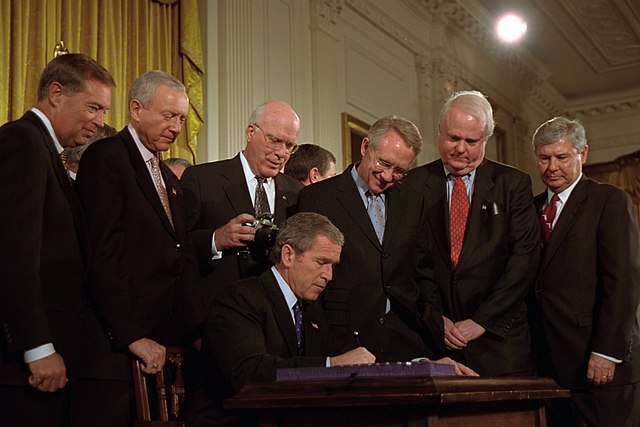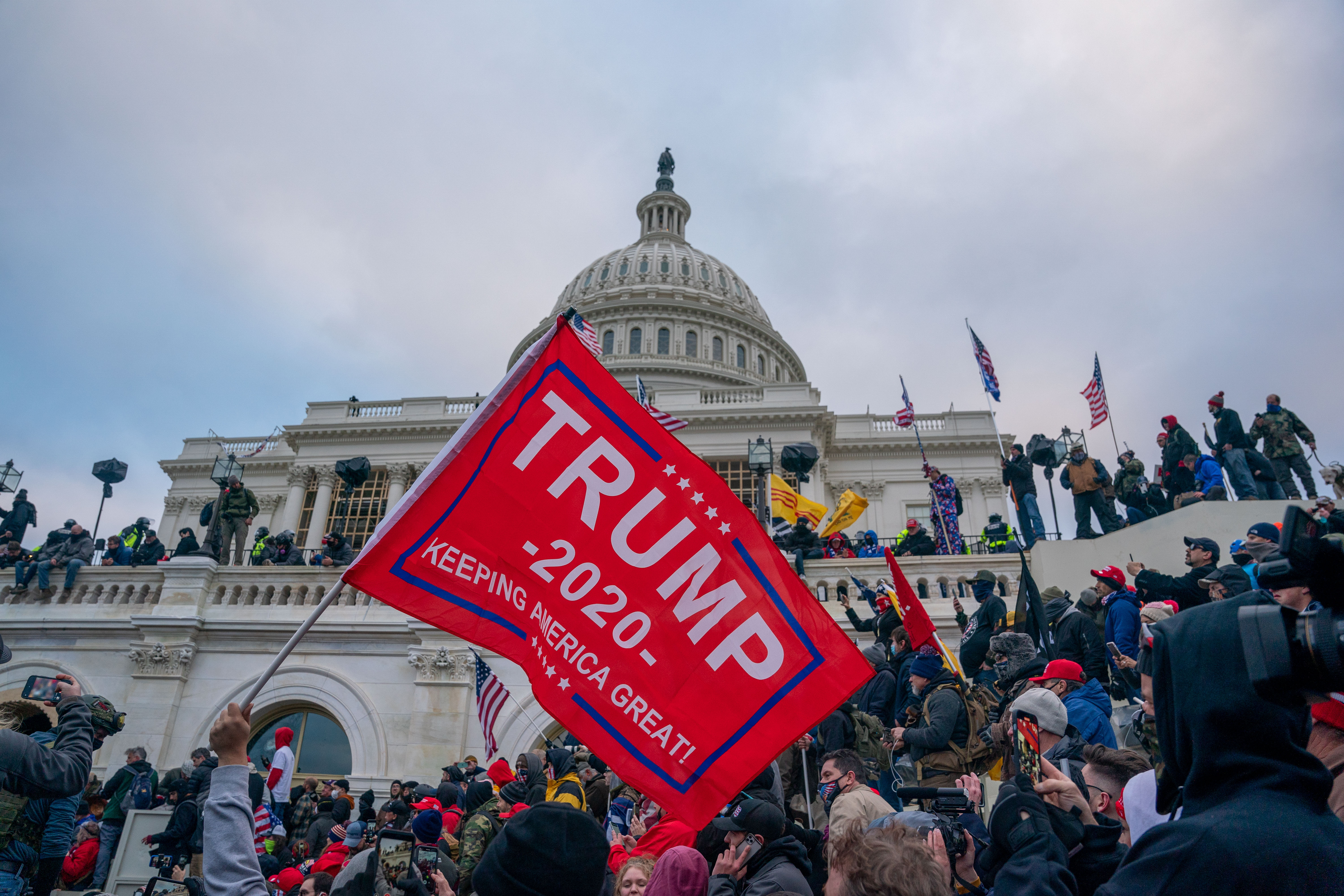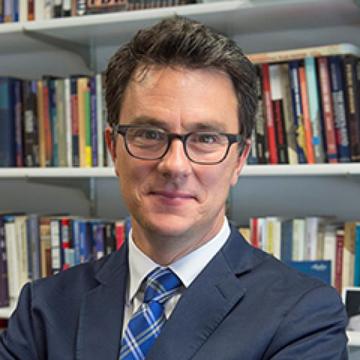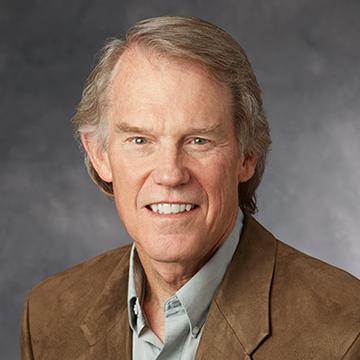The Rise of the Strongman Presidency
Extraordinary unilateral executive power threatens democracy
Decades ago, presidential politics routinely featured fights over policy, principle, and power—fights in which presidents and Congress jostled for advantage and the boundaries of executive authority were renegotiated. Depending on who emerged triumphant in any particular standoff, partisans could be expected to register either approval or complaint; nonetheless, amid serious and sustained disagreement, the norms of civility, tolerance, and forbearance prevailed. This was what normal politics looked like, and it fit well within the confines of democratic governance.
What was normal in the past, however, no longer prevails. The populist faction that dominates one of our major parties is not interested in following such plotlines, with all the attendant limits, setbacks, and qualifications. It embraces a vision of national leadership—the strongman presidency—that operates beyond the usual democratic bounds and is ultimately a danger to democracy itself.
How did this come to be? How did the threat of a strongman presidency—one untethered to the rule of law, reliant on unilateral powers, and antithetical to democratic governance—take center stage in American politics? In a new book, which we are still drafting, we investigate these questions. Our answers, as you might expect, are more involved than we can convey in a short essay, but we can provide a brief perspective.
It embraces a vision of national leadership—the strongman presidency—that operates beyond the usual democratic bounds and is ultimately a danger to democracy itself.
The presidency has undergone three periods of transformation during the modern era, each involving dramatic expansions of its power. The first was propelled by the spectacular rise of the administrative state, which was rooted in the progressive presidencies of Theodore Roosevelt and Woodrow Wilson and grew enormously in size, scope, and cost during Franklin Roosevelt’s New Deal, Lyndon Johnson’s Great Society, and Richard Nixon’s reluctant embrace of new regulatory responsibilities in the early 1970s. For roughly 80 years, progressive values were the driving force behind American politics. They established the reality of positive government and—as in all other Western democracies—generated a large, complex, and robust bureaucracy, the legal mission of which was to address a broad array of social problems and to promote social welfare.
The administrative state was a boon to presidential power. With its vast resources and numerous agencies and programs, it gave presidents enormous opportunities to make their marks on public policy and build their historical legacies. To take full advantage of these opportunities, though, presidents needed to bring the administrative state under their control. This led them—again, all of them, regardless of party—to sequentially construct a centralized organizational apparatus, headquartered in the Executive Office of the President, whose purpose was to promote presidential power.
This first transformation was driven by orientations to power that were largely symmetric across presidents, and it significantly expanded the reach, capacity, and influence of the presidency. More was still to come, however, as a subsequent transformation boosted presidential power further. This second transformation was fueled by a conservative backlash—and thus, unlike the first, was asymmetric across the parties. The underlying commonalities remained, but layered on top was a significant dimension of difference.
For roughly 80 years, progressive values were the driving force behind American politics.
Staunch conservatives, from William F. Buckley to Barry Goldwater, had often condemned the administrative state as unconstitutional, socialistic, and an affront to individual liberties and limited government. Yet for many years after the New Deal, they wielded little political power, even within the Republican Party. That began to change during the 1970s with a confluence of developments—chief among them the emerging Republican realignment of the South, the unraveling of the New Deal coalition, and the political activation of evangelicals—that accelerated the conservative movement and led to the election of Ronald Reagan in 1980. By then, conservatives had become convinced that their efforts to retrench the administrative state could not be realized within Congress, where Democrats held too much sway, and that the key to victory lay in a presidency capable of wielding extraordinary unilateral power.
Henceforth, the asymmetric logic would have profound implications for presidential politics. Democratic presidents did not need extraordinary power because the administrative state was largely made up of agencies that pursued progressive legal mandates. When government agencies simply did their jobs as specified by law, Democrats came out ahead. For Republicans, nearly the opposite was true. Conservative Republicans were at war with the administrative state, dedicated to cutting it back and crippling its ability to function. To wage this war, they needed far greater top-down power than did Democrats. They also needed a radically different orientation toward the law—which, in establishing and protecting virtually every aspect of the administrative state, impeded their ambitions.
Reagan blazed the trail. Most consequentially, his administration created and promoted the unitary executive theory—a new conservative jurisprudence that, in its stronger versions, claims to provide a legal justification for a virtually unchained unilateral presidency and its systematic efforts (under conservative administrations) to limit and even sabotage the legally established agencies and programs of the administrative state.
Conservative Republicans were at war with the administrative state, dedicated to cutting it back and crippling its ability to function.

Early on, critics warned about the dangers to democracy presented by this new theory. Those warnings seemed to be realized under George W. Bush, whose steadfast embrace of the unitary executive theory led to the torture of prisoners and the surveillance of American citizens in violation of statutory law. Prominent legal scholars pointed to Bush as a prime example of a president assuming autocratic powers.
The dangers of presidential power, however, were about to escalate. In the years to come, elected Republicans and their conservative base would become much more extreme than Bush ever was—and in this context of growing Republican extremism, the asymmetric logic would instigate a third upward shift in the magnitude of presidential power. This one was seismic. In combination with the first two, it threatened to produce a strongman presidency.
A new breed of conservatism was afoot—a populist breed of conservatism. Unlike traditional Republican constituents, populists were not wedded to libertarianism or big business or free markets. In numbers that grew slowly but relentlessly during the post-Reagan decades, they were concentrated among less educated, blue-collar, White, rural, religious populations that were being pummeled by modernization, were threatened culturally and economically, and were driven by grievance and anger—particularly against a “system” that they felt had betrayed them, forgotten them, and forced progressive values upon them. They yearned for a strongman who would attack the “system”; flout its norms, rules, and procedures; and take direct action on their behalf.
They yearned for a strongman who would attack the “system”; flout its norms, rules, and procedures; and take direct action on their behalf.
Within this populist movement, Democrats are seen as mortal enemies rather than worthy political opponents. The fight against progressivism and progressive big government is an apocalyptic battle pitting “the people” against a corrupt, illegitimate “system”—a battle that, if lost, would put an end to the America they love. Losing is not an option, nor is compromise. That being so, the bedrock values of democracy—tolerance, forbearance, majority rule, checks and balances, civil discourse, fair competition, respect for opponents, even reliance on evidence and science—cannot be fully embraced because to do so would grant legitimacy to the enemies of the people and give them access to power. For these populists, conventional understandings of democracy are undesirable and dangerous.
In Donald Trump, populists found their leader. From the moment he announced his intention to seek the presidency, he made it clear that he had little use for the legal trappings of democracy, and he frequently expressed his desire to rule as a strongman. “I have an Article II,” he famously announced, “and it says I can do whatever I want.” In office, of course, he could not quite overcome all the bothersome constraints built into the American political system. Even so, his presidency was a wild, relentless, in-your-face demonstration of boundary-busting unilateralism.

For four years, Trump waged a protracted campaign against the rules, norms, and institutions of democratic politics. It all came to a climax shortly after his 2020 election loss, when he was barely stopped from overthrowing Joe Biden’s legitimate victory and keeping himself in power through lies and violence. This, the final act of Trump’s presidential term, was wholly fitting. It was a classic authoritarian move of a strongman presidency.
For four years, Trump waged a protracted campaign against the rules, norms, and institutions of democratic politics.
For now, at least, Trump is out of office. But the threat of populist extremism remains acute. It is the new normal on the political Right. It has taken over the Republican Party. It infuses the party with a magnified hatred of the administrative state. And it embraces the strongman presidency as a battering ram for directly attacking the administrative state—threatening the very foundations of our democracy. Trump himself is not the problem. The problem is the power of populism. And unless it is somehow weakened in the years ahead, the nation faces a very rocky and uncertain future.

